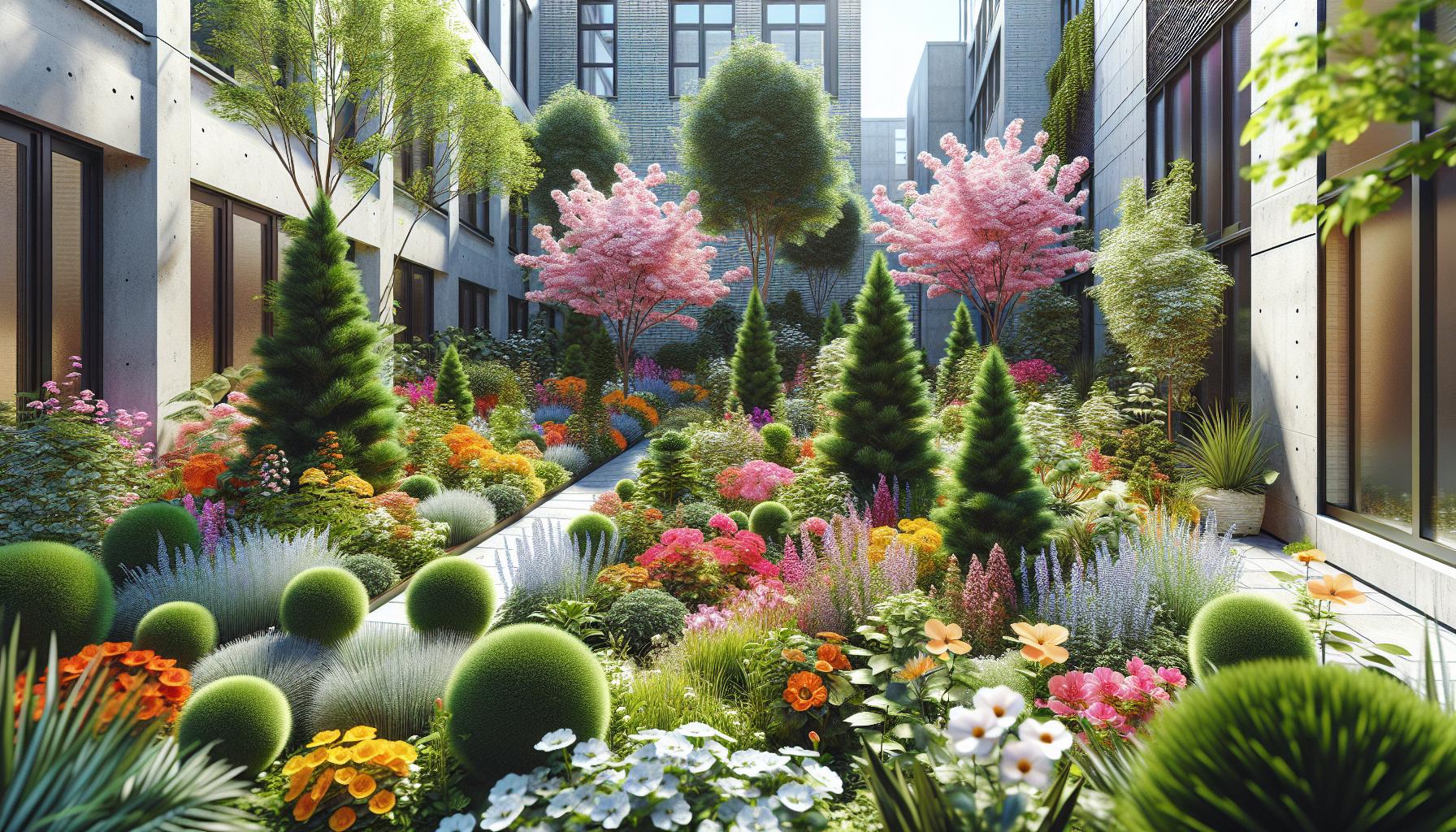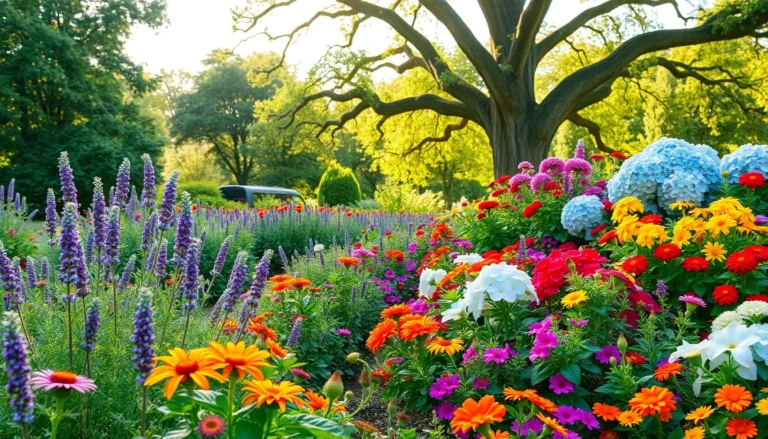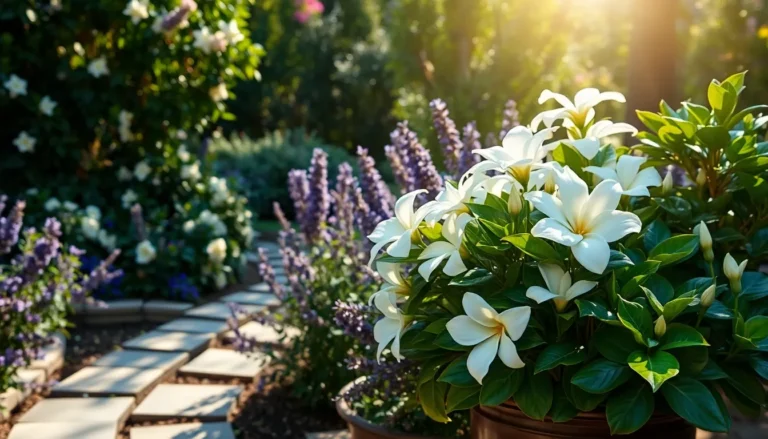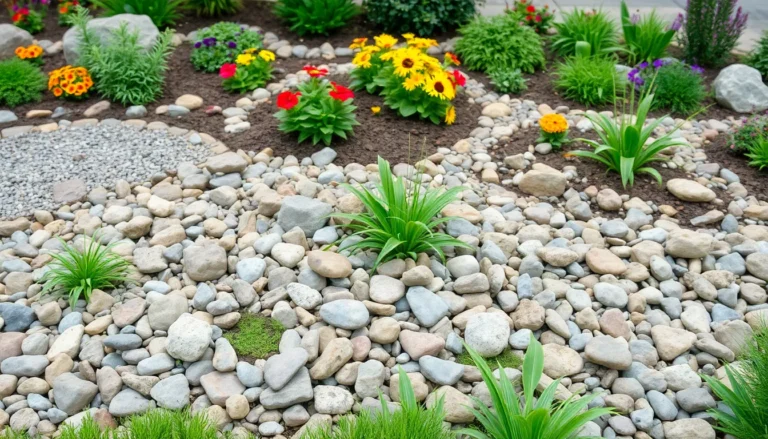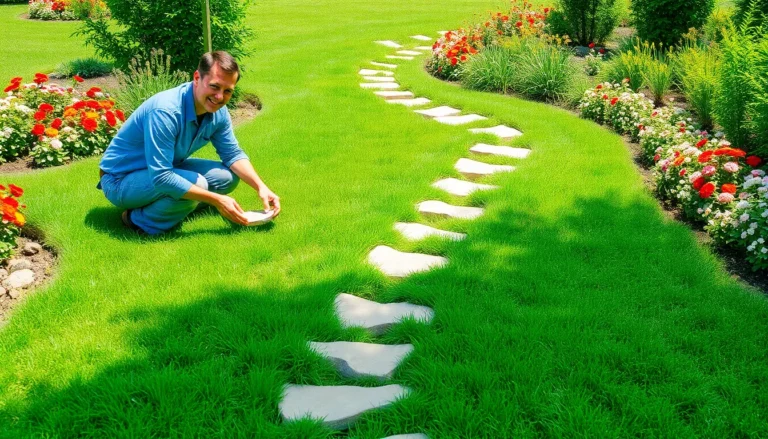I’ve always been fascinated by the art of creating beautiful landscapes in small spaces and dwarf trees have become my go-to solution for compact gardens. These miniature wonders offer all the charm of full-sized trees while fitting perfectly into urban yards and tight corners.
As a landscaping enthusiast I’ll tell you that dwarf trees aren’t just smaller versions of regular trees – they’re specially bred varieties that naturally maintain a compact size. Whether you’re working with a tiny courtyard or looking to add visual interest without overwhelming your space these versatile plants can transform any outdoor area into a stunning garden retreat. From flowering varieties to evergreens dwarf trees provide year-round interest while requiring minimal maintenance.
Key Takeaways
- Dwarf trees are genetically modified or naturally compact versions of standard trees, growing to 1/3 or 1/2 the size of regular trees (typically 6-12 feet tall)
- These compact trees are perfect for small spaces like urban gardens, patios, and container gardens, requiring minimal maintenance while providing year-round visual interest
- Popular varieties include flowering options like Japanese Cherry and Crape Myrtle, and evergreens such as Dwarf Alberta Spruce and Hinoki Cypress
- Proper spacing is crucial – small dwarf trees need 6 feet between plants, while medium varieties require 8-10 feet spacing for optimal growth
- Regular maintenance includes seasonal pruning, consistent watering (varying by season), and annual fertilization with 10-10-10 slow-release fertilizer
- Dwarf trees excel in creating privacy screens, foundation plantings, and focal points in small gardens when properly positioned and combined with complementary plants
Dwarf Trees Landscaping
Dwarf trees represent genetically modified or naturally compact versions of standard tree species, typically growing to one-third or half the size of their full-sized counterparts. I’ve found these specialized trees offer unique advantages in modern landscaping while maintaining the aesthetic appeal of traditional trees.
Size and Growth Characteristics
Dwarf trees reach mature heights between 6 to 12 feet compared to standard trees that grow 25 to 60 feet tall. I’ve observed their growth rate averages 3 to 6 inches annually, with a spread diameter of 4 to 8 feet at maturity. These trees maintain their compact form through specialized root systems genetic modifications:
- Controlled vertical growth through shortened internodes
- Dense branching patterns that create fuller appearances
- Reduced leaf sizes that complement the smaller structure
- Natural resistance to becoming oversized or leggy
- Urban patios measuring 10×10 feet or smaller
- Container gardens on balconies or decks
- Foundation plantings near buildings
- Privacy screens in tight boundary areas
| Space Type | Recommended Spacing | Number of Trees per 100 sq ft |
|---|---|---|
| Patio | 4-6 feet apart | 3-4 trees |
| Border | 3-5 feet apart | 5-6 trees |
| Container | 1 tree per 24-inch pot | 2-3 trees |
| Foundation | 5-7 feet apart | 2-3 trees |
Best Dwarf Trees for Landscaping
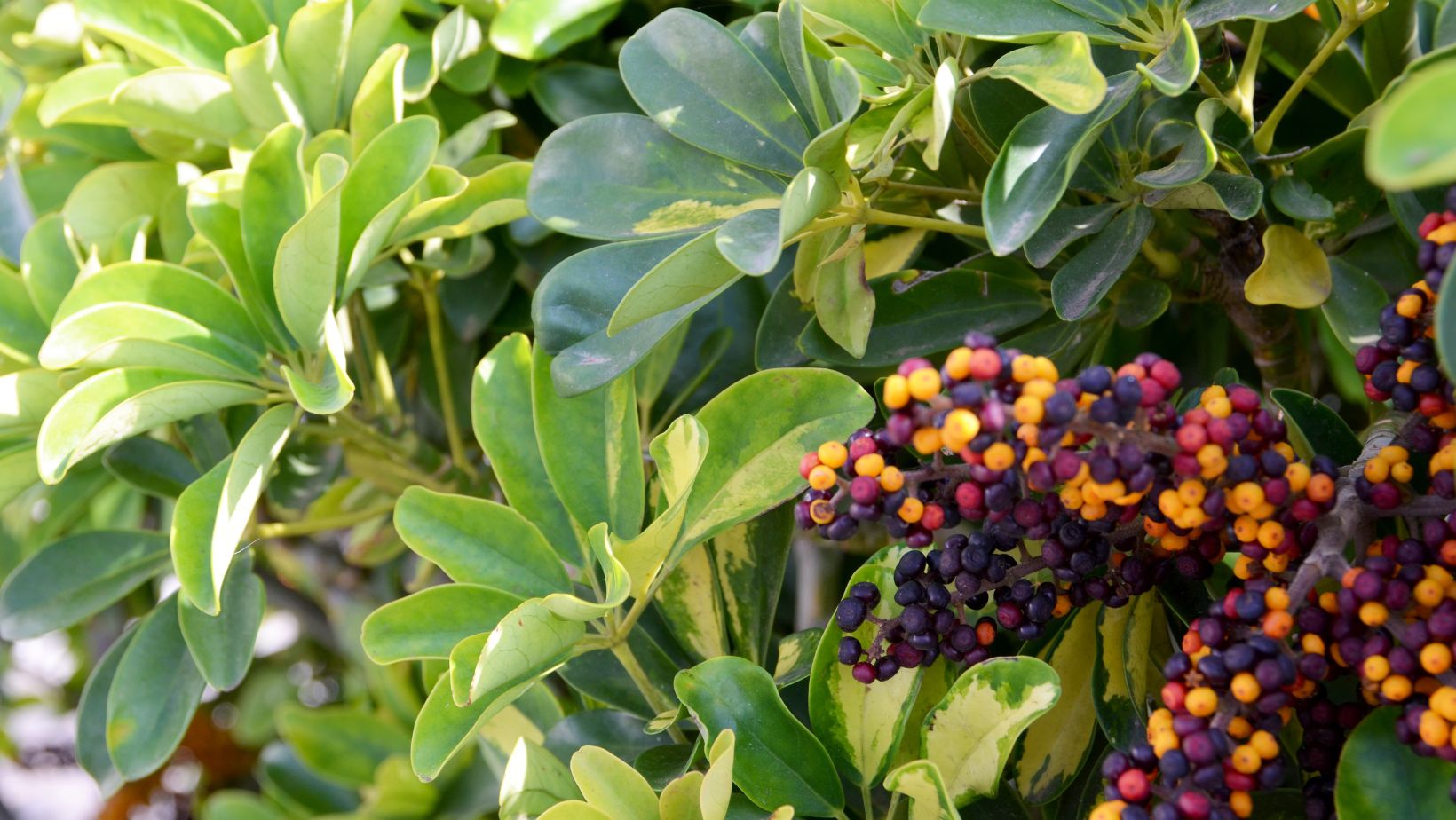 I’ve selected the most versatile dwarf trees for landscaping based on their adaptability growth patterns seasonal interest. These compact specimens create stunning focal points in small gardens patios urban spaces.
I’ve selected the most versatile dwarf trees for landscaping based on their adaptability growth patterns seasonal interest. These compact specimens create stunning focal points in small gardens patios urban spaces.
Ornamental Flowering Varieties
Ornamental dwarf trees produce spectacular blooms while maintaining a manageable size. Japanese Flowering Cherry ‘Snow Fountain’ grows 8-15 feet tall with cascading white blossoms in spring. Dwarf Crape Myrtle ‘Pocomoke’ reaches 5 feet high featuring vibrant pink flowers from summer through fall. Star Magnolia ‘Royal Star’ tops out at 10 feet displaying fragrant white star-shaped blooms in early spring. Dwarf Dogwood ‘Red Pygmy’ grows 5-6 feet tall producing red-pink flowers followed by ornamental berries.
| Dwarf Tree Variety | Height (feet) | Bloom Season | Flower Color |
|---|---|---|---|
| Snow Fountain Cherry | 8-15 | Spring | White |
| Pocomoke Crape Myrtle | 5 | Summer-Fall | Pink |
| Royal Star Magnolia | 10 | Early Spring | White |
| Red Pygmy Dogwood | 5-6 | Spring | Red-Pink |
Evergreen Dwarf Options
Evergreen dwarf trees provide year-round structure color interest in the landscape. Dwarf Alberta Spruce grows 6-8 feet tall with dense pyramid-shaped foliage. Hinoki Cypress ‘Nana Gracilis’ reaches 6 feet high displaying fan-like branches with deep green needles. Dwarf Blue Spruce ‘Globosa’ forms a 3-5 foot rounded shape with striking silver-blue needles. Little Gem Magnolia maintains a compact 15-20 foot height producing glossy leaves white flowers throughout summer.
| Dwarf Evergreen | Height (feet) | Shape | Foliage Color |
|---|---|---|---|
| Alberta Spruce | 6-8 | Pyramid | Green |
| Nana Gracilis Cypress | 6 | Upright | Deep Green |
| Globosa Blue Spruce | 3-5 | Round | Silver-Blue |
| Little Gem Magnolia | 15-20 | Oval | Dark Green |
Planning Your Dwarf Tree Landscape
Creating an effective dwarf tree landscape requires strategic placement and thoughtful plant combinations. I’ve developed guidelines for optimal spacing and companion planting based on my experience with compact garden designs.
Proper Spacing and Placement
Dwarf trees require specific spacing distances based on their mature spread dimensions to thrive. I place small dwarf varieties (4-6 feet spread) at least 6 feet apart from each other and 4 feet from structures. Medium dwarf trees (6-8 feet spread) need 8-10 feet between specimens. Here’s a spacing guide for common dwarf tree types:
| Tree Type | Minimum Spacing | Distance from Structures |
|---|---|---|
| Small Dwarf (4-6′ spread) | 6 feet | 4 feet |
| Medium Dwarf (6-8′ spread) | 8-10 feet | 6 feet |
| Large Dwarf (8-12′ spread) | 12-15 feet | 8 feet |
Companion Plant Selection
Dwarf trees pair effectively with plants that complement their size and growing requirements. I combine these compact trees with:
- Ground covers
- Creeping Thyme
- Japanese Pachysandra
- Dwarf Mondo Grass
- Low-growing shrubs
- Dwarf Boxwood
- Compact Holly
- Mini Rhododendrons
- Perennial flowers
- Dwarf Daylilies
- Compact Coneflowers
- Small Ornamental Grasses
Each companion plant grows under 3 feet tall to maintain proper scale relationships with dwarf trees.
Essential Care and Maintenance
Dwarf trees require specific maintenance practices to maintain their compact size and healthy growth patterns. Here’s a detailed guide to keeping these landscape elements thriving year-round.
Pruning and Shaping Tips
Pruning dwarf trees focuses on maintaining their natural compact form while promoting healthy growth. I trim dead or crossing branches in late winter or early spring using clean, sharp pruning shears. Here are the essential pruning practices:
- Remove crossing branches at 45-degree angles to prevent water accumulation
- Cut back new growth by 1/3 during the growing season to maintain shape
- Thin out dense areas to improve air circulation within the canopy
- Prune flowering varieties immediately after blooms fade
- Limit height control cuts to 2-3 inches of new growth annually
Watering and Fertilization Needs
Proper irrigation and nutrient management ensure optimal growth for dwarf trees. I maintain a consistent watering schedule based on soil moisture levels and seasonal requirements:
| Season | Frequency | Amount |
|---|---|---|
| Spring | 2x weekly | 1-2 gallons |
| Summer | 3x weekly | 2-3 gallons |
| Fall | 1x weekly | 1-2 gallons |
| Winter | 2x monthly | 1 gallon |
- Apply slow-release 10-10-10 fertilizer in early spring
- Add 2 pounds of organic compost per square foot in fall
- Spread 2-inch layer of mulch around the root zone
- Test soil pH every 6 months to maintain 5.5-7.0 range
- Supplement with micronutrients based on soil test results
Common Design Ideas with Dwarf Trees
I create distinctive landscape designs by incorporating dwarf trees as focal points in small spaces. These versatile plants enhance outdoor areas through strategic placement and thoughtful combinations.
Creating Privacy Screens
Dwarf trees form effective privacy screens in compact spaces through layered planting arrangements. I position columnar varieties like Dwarf Italian Cypress 4 feet apart to create dense barriers up to 8 feet tall. Combining different heights creates visual depth:
- Plant taller dwarf evergreens (8-10 feet) in the back row
- Add medium-height flowering varieties (6-7 feet) in the middle
- Include low-growing spreaders (4-5 feet) in the front
- Space trees at 50-75% of their mature width for optimal coverage
- Position dwarf trees 3-4 feet from house foundations
- Arrange trees asymmetrically in groups of 3 or 5
- Place taller varieties (6-8 feet) at building corners
- Install compact spreaders (4-5 feet) between windows
- Add flowering specimens as focal points near entrances
| Location | Distance from Wall | Mature Height | Spacing Between Trees |
|---|---|---|---|
| Corners | 4 feet | 6-8 feet | 5-6 feet |
| Windows | 3 feet | 4-5 feet | 4-5 feet |
| Entrances | 3.5 feet | 5-6 feet | 4-5 feet |
I’ve discovered that dwarf trees are truly remarkable additions to any landscape especially for those with limited space. Their compact size carefully curated growth patterns and diverse variety make them perfect for modern urban gardens.
Whether you’re looking to create a serene private retreat or add year-round visual interest to your outdoor space dwarf trees offer endless possibilities. With proper planning care and maintenance these miniature wonders can transform even the smallest yard into a stunning landscape that will flourish for years to come.
Remember that success with dwarf trees comes down to choosing the right varieties for your space and following proper planting and care guidelines. I’m confident that by incorporating these versatile plants into your landscape design you’ll create a beautiful and manageable outdoor sanctuary.

